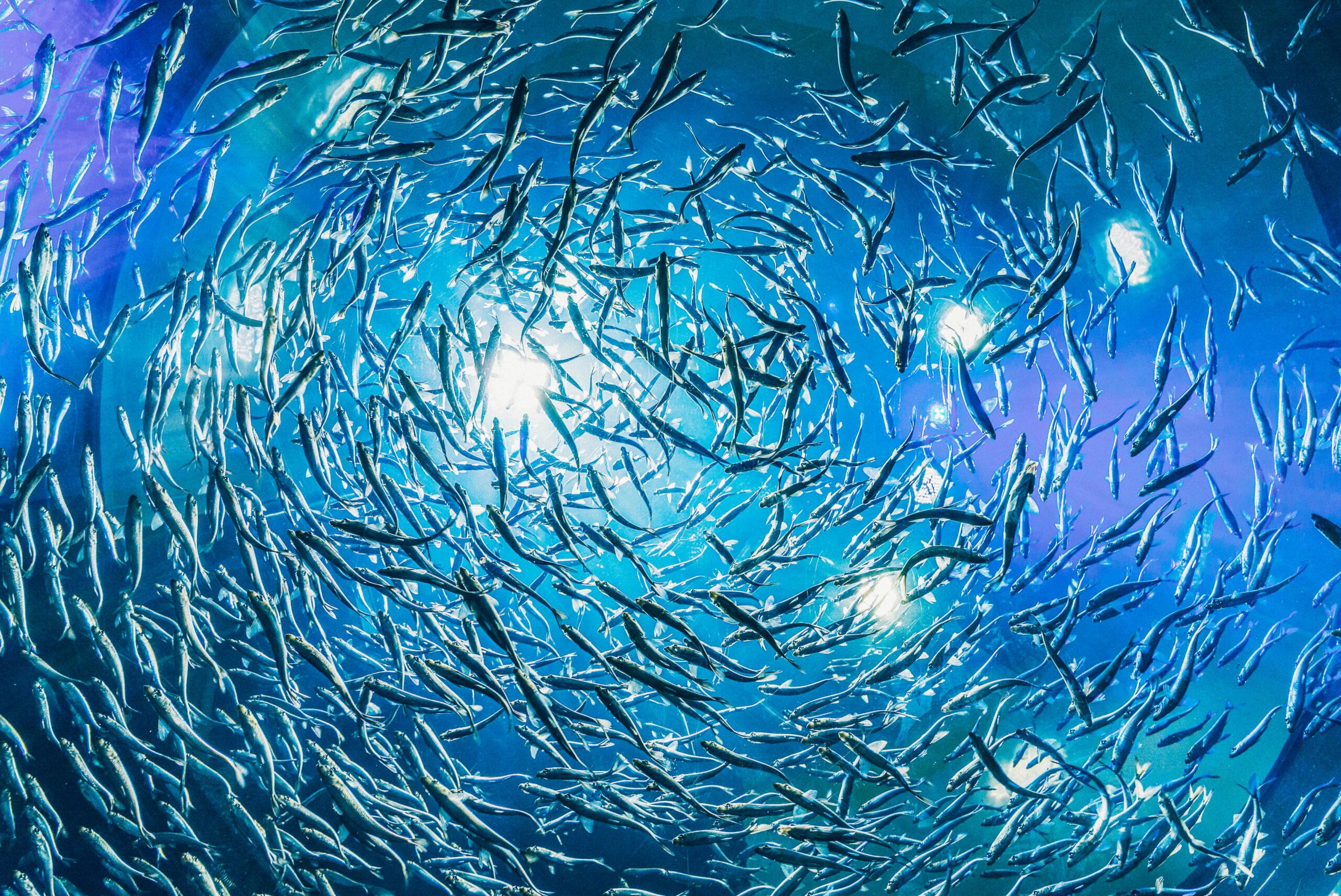The UK Has Created a Robot Fish That Eats Ocean Plastic and Powers Itself by Digesting It, Eliminating the Need for a Battery

They say the ocean has a memory. That every ripple, every wave, every current remembers what we’ve put into it.
But what happens when what we give is garbage?
Imagine a fish—not born of bone and blood, but of wire and will. A fish that doesn’t flee pollution, but hungers for it. One that swims not to survive, but to cleanse. Off the coast of England, such a creature exists. Designed by human hands to undo human harm, it eats what real fish choke on: plastic.
Every year, we dump the weight of nearly a million elephants’ worth of plastic into our oceans—most of it never leaves. It breaks down into pieces so small they vanish from sight but not from consequence. These microplastics slip past filters, into fish, into food, and finally, into us.
What if nature’s wisdom and human ingenuity could join forces—not just to fix what’s broken, but to rewrite how we live with the planet?
What follows isn’t science fiction. It’s the story of a robot fish, a global crisis, and the astonishing promise of healing where harm once ruled.
Microplastics and Ocean Pollution
It starts small. A plastic bottle tossed carelessly. A synthetic fiber rinsed out in the wash. A tire scraping against asphalt. The fragments are too tiny to notice — too small to care about. Until it’s too late.
These fragments are known as microplastics — particles less than 5mm in size — and they’re rapidly becoming one of the most insidious pollutants of the 21st century. Unlike the dramatic images of plastic bags choking turtles or six-pack rings strangling seabirds, microplastics slip beneath the radar. They float in seawater, settle on the ocean floor, and swirl in gyres like invisible ghosts of our throwaway culture.
Scientists have discovered microplastics in every corner of the globe’s oceans — from the deepest trenches to Arctic ice. They’re in sea salt, fish guts, shellfish, and even human blood and lungs. They’re not just a pollution problem — they’re a health hazard, infiltrating ecosystems and organisms alike.
And they don’t come from just one place. Microplastics are the result of larger plastics breaking down over time — from water bottles, plastic packaging, synthetic clothing, cosmetics, vehicle tires, and even the friction of your shoe soles on pavement. These particles are laced with harmful chemicals like bisphenol A (BPA), phthalates, and heavy metals that can leach into tissues once ingested.
For marine animals, the consequences are brutal. A fish that ingests microplastics may feel full, stop eating, and slowly starve. Predators then eat that fish — and the plastic climbs the food chain. Eventually, it ends up back on our plates. Scientists are still unraveling the long-term effects on human health, but the early signs are troubling: inflammation, cellular damage, hormonal disruption.
And the scale? Over 170 trillion plastic particles are estimated to be afloat in our oceans right now, according to a 2023 study published in PLOS ONE — and that number is accelerating.
The Rise of the Robo-Fish
What if the answer to ocean pollution didn’t come in the form of a ship or a net — but in a fish?
Off the coast of southern England, a new kind of swimmer has emerged — not born from evolution, but designed by engineers who studied it. Developed by researchers at the University of Surrey, this robotic fish doesn’t just look like a marine creature — it moves like one. With a flexible tail that mimics the graceful propulsion of real fish, it glides silently through the water. But unlike its living counterparts, it isn’t searching for food — it’s hunting microplastics.
Here’s where the innovation gets wild: this fish-shaped robot doesn’t need a battery. Instead, it powers itself by digesting the very thing it’s designed to clean — plastic.
Using a custom filtration system, the robot draws in microplastic particles suspended in seawater. Inside its body, the plastic is compressed and processed to produce low-voltage electricity, which fuels its internal systems. The more plastic it eats, the more power it generates. It’s not just self-sustaining — it thrives on pollution.
And it does so safely. Built from soft, biodegradable materials, the robot is harmless to marine life. It avoids collisions, swims in silence, and surfaces on its own once its collection chamber is full. In a 12-hour patrol, it can collect over 2 kilograms of microplastics — a promising start for a future where entire swarms of these robo-fish could work together to clean coastlines and harbors.
This isn’t an isolated project. Around the world, other scientists are diving into similar innovations. At Sichuan University in China, researchers developed a tiny 13mm-long robo-fish with a soft, self-healing body inspired by mother-of-pearl — the shimmering inner layer of clam shells. Unlike the UK’s plastic-digesting version, this one adsorbs microplastics to its surface using powerful electrostatic interactions, latching onto particles as it swims. Even when damaged, it can heal itself to 89% efficiency, continuing its mission with resilience nature would envy.
Both fish embody the same principle: biomimicry — studying nature not just to admire it, but to learn from it. Just as dolphins harness the energy of the sea to swim efficiently, these robots borrow the flow, form, and rhythm of marine life to navigate and clean with grace.
The Global Innovation Wave: From China to the UK
When a fish-shaped robot starts eating plastic off the coast of England, it turns heads. But what’s happening in the UK is only one current in a global tide of innovation. From London to Sichuan, from Seoul to MIT, scientists and engineers are converging on a shared truth: the crisis we face is planetary, and so must be the solutions.
In China, researchers at Sichuan University unveiled a robotic marvel just 13 millimeters long — smaller than a paperclip, but carrying the weight of a bold vision. This soft-bodied, self-propelled robo-fish swims using infrared light, its tail flapping like a plankton-sized superhero. Its skin, crafted from a flexible material inspired by nacre (the inner layer of clam shells), is designed to attract and trap microplastics as it swims. The microplastics don’t just stick — they cling to it due to electrostatic and chemical interactions, making the fish a mobile, silent magnet for pollution.
But this Chinese invention has something else remarkable: self-healing capabilities. If it gets cut or torn in rough waters, it can regenerate up to 89% of its original function. That means fewer replacements, longer missions, and better sustainability — a concept rooted deeply in both nature and necessity.
Meanwhile, in South Korea, engineers are testing a different kind of robo-fish — not to eat microplastics, but to guard real fish. The Ichthus V5.5, a robotic trout built by researchers at Imperial College London, swims in farming enclosures to monitor water quality, detect chemical imbalances, and send alerts when pollution spikes. Unlike traditional robots that disturb marine life with their noise and propellers, Ichthus moves like a real fish — with quiet oscillations, high maneuverability, and a turning radius one-tenth its body length. It even returns to a floating dock when its battery runs low, recharging like a sea creature taking a breath.
Together, these innovations hint at something deeper: a global reimagining of how we interact with the oceans. Engineers are no longer building machines that dominate nature. They’re designing machines that mimic it, that blend into it, and in many ways, that serve it.
And they’re not working in isolation. The movement is gaining international traction — with pilots supported by institutions like the University of Surrey, Rutgers University, MIT, and the United States National Oceanic and Atmospheric Administration (NOAA). Environmental groups and tech firms are beginning to fund, test, and scale these ideas, recognizing the urgency of addressing microplastic pollution before it spirals further out of control.
The Limits of Robotic Solutions
For all their brilliance, robotic fish — whether they eat, absorb, or monitor pollution — are still in their infancy. Prototypes. Proofs of concept. Even the most advanced models, like the University of Surrey’s energy-converting robo-fish, are only beginning real-world deployments. These machines face challenges that run deeper than design.
First, there’s scale. A single robo-fish, no matter how efficient, can only cover so much ground. Cleaning up microplastics in a small harbor is one thing — scrubbing entire oceans is another. To scale up would require swarms of robots operating in coordination, across vast and shifting waters. This raises questions about navigation, cost, maintenance, and safety — and we’re not there yet.
Second, there’s endurance. Saltwater corrodes. Rough seas damage. Ocean conditions are notoriously harsh, and machines — even self-healing ones — wear down. Power management remains a key hurdle. While some robo-fish convert plastic into electricity, others still rely on external batteries or docking stations, limiting their range and autonomy.
Third, there’s the economics. High-end robotics aren’t cheap. Designing, testing, deploying, and maintaining fleets of underwater drones can become a massive financial endeavor — one often out of reach for lower-income nations. This leads to a troubling paradox: countries most affected by plastic pollution may be the least equipped to access the tools needed to fight it.
And perhaps most importantly: technology treats the symptom, not the cause. Robo-fish can help clean what’s already there. But they don’t stop the millions of tons of plastic still entering the ocean each year. There is a danger — a temptation, even — in relying on tech to clean up our mess, while the pipeline of pollution flows freely. As Professor Philip Demokritou put it: “The motto for the last 40 to 50 years for the chemical industry has been: make the mess now, clean it up later. That’s not a sustainable model.”
Reimagining Our Relationship with Plastic
Plastic was never the enemy. It’s lightweight, durable, cheap to produce — and that’s precisely the problem. In our pursuit of convenience, we turned a miracle material into a global menace. Single-use bags. Overwrapped produce. Packaging that outlives the products inside. We’ve surrounded our lives with plastic that’s designed to last forever — even though we treat it as disposable.
And now, we’re seeing the price: polluted oceans, poisoned wildlife, and plastic particles in our bloodstreams.
So while robotic fish can clean what’s already there, they can’t stop what’s still coming. For that, we need a fundamental shift in mindset — from linear consumption to circular thinking. From disposability to responsibility.
That shift is already beginning. Researchers are developing biodegradable alternatives to plastic, including plant-based coatings for food packaging, as seen in work from Rutgers University. These materials degrade naturally, protect against pathogens, and could one day replace cling film, bubble wrap, and styrofoam — without leaving a toxic trace.
Meanwhile, innovators are using food waste and natural fibers to design packaging that fits into a circular economy. Instead of “make-use-trash,” the future looks more like “create-use-renew.” The goal is not just to replace plastic but to rethink the entire system that depends on it.
When Machines Imitate Nature to Heal It
A fish made of circuits. Swimming in silence. Feeding on the very thing that’s choking the sea.
There’s something beautiful — and heartbreaking — about that image.
It reminds us that for all our intelligence, we’ve created problems so big that even nature can’t solve them on its own. So we turned to nature again — not just for resources, but for wisdom. We watched how fish swim. How shells heal. How ecosystems balance. And then we built machines that could learn from that intelligence.
The robo-fish isn’t just a machine. It’s a message. A signal that perhaps, even in the wake of destruction, humanity still remembers how to listen.
But this is not the end of the story. It’s only the beginning. Because healing the ocean isn’t about watching robots clean up our mess. It’s about becoming the kind of species that doesn’t make that mess in the first place.
So here’s the real challenge:
Let the robot fish be a reminder — not of how far we’ve fallen, but of how far we can rise. Let it inspire not just admiration, but action. Rethink what you consume. Question what you throw away. Support innovation. Advocate for policy. Demand systems that serve life, not just profit.
Because the future doesn’t belong to the machines we build — it belongs to the choices we make.
And maybe, just maybe, if we learn to imitate nature not just in our designs, but in our values — we won’t just save the ocean.
Loading...

